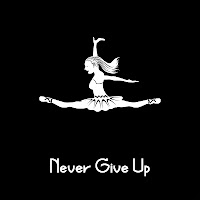A
popular saying in the 60’s, ‘Becoming is better than being’ expressed the idea that
growth was more desirable than a permanent state. It is a notion whose time has
come again – this time around not so much as an ideology but as a result of
research - research that I for one, am thrilled to read.
As a young (and very average) student ballet dancer ‘back
in the day’, I was fleetingly encouraged by a claim that to be successful
required only two percent talent and ninety-eight percent hard work. Unfortunately,
my hard work seemed to go unnoticed and I felt increasingly discouraged and timid,
gradually withdrawing from situations where my lack of self-confidence might be
reinforced. The success I sought eluded me until I finally applied the hard
work to the areas in which I was perceived to have ‘talent’. Two different
careers later I discovered that I had been raised with a not-so-helpful ‘fixed’
mindset; when talent and abilities are praised and rewarded, and mistakes and efforts
that fall short are indicators of lack of ability and to be discouraged or
avoided. Conversely, a ‘growth’ mindset -viewing faults and failure as
opportunities for growth- is a mindset that, I discovered, not only gradually
reveals untapped abilities but opens doors of previously unimagined
possibilities.
The terms ‘growth mindset and ‘fixed mindset’ were
coined by one of the leading researchers in the field, Professor Carol Dweck at
Stanford University, who is also often credited with popularising the ‘Becoming
is better than being’ quote. Her research has attracted increasing attention
among educators and mental health professionals because her findings show that,
rather than focusing on intelligence and innate achievement, it is far more
important to reward effort, creative strategies, and perseverance.
This growth mindset is all about ‘becoming’. It views
the process; the effort; the ‘journey’; the growth itself as having more value
than ‘being’ in the accomplished state. Although we are all inclined to praise
intelligence and ability in both ourselves and in our children, research shows
that this actually creates a ‘fixed mindset’ resulting in fragile people
without the resilience needed to effectively tackle adversity or to persevere
in the face of difficulty. With such a mindset, when we feel rejected or
disappointed, we immediately think ‘I’m
not likeable. I’m not approved of – I’m not a good enough person’, feeling
guilt or shame for having done something negative or failed to achieved a goal.
However, with a growth mindset we think ‘I
am not happy with what I did. It’s inconsistent with my values. How can I better
understand it? What can I learn from it? How can I make up for it and improve
in the future?’
Dweck is often asked to compare her findings with the
ever-popular Cognitive Behavioural Therapy (CBT), and her response is
particularly interesting. “CBT often says
“Don’t think you’re not a smart person because you didn’t get an A. Look at all
the other A’s you got – you’re a smart person.” But in the mindset framework,
we’re saying “Get out of the smart-person framework entirely, Stop thinking
about that the good or bad measures you but rather think of yourself as a work
in progress.” CBT asks you to find evidence to challenge the argument, and
we’re saying it’s the wrong argument.”
I find this particularly interesting because it
validates and supports our work with Applied Emotional Mastery – where we focus
on the feeling state and using the management of emotions to help better
understand, learn from, and continuously improve – whether it’s in
relationships, parenting, managing others or opening our own mind up to more
possibilities; in other words to develop a growth mindset.
So, as we approach a new year again, why not start
treating your mistakes, and your children’s mistakes, as exciting, interesting,
perfect opportunities for learning and growth, and for building resilience. Had
that been my mindset as a young dancer, who knows, age aside I might still be
prancing around ‘en pointe’!





